I'm in the process of programatically building a fairly complex SSIS data flow using the EzAPI library and have hit a snag. I've attached an image of what I'm trying to achieve.

I've got the start (up to the merge join) working correctly but have come unstuck trying to map the input of the merge join component to the output.
Here's the code I have so far (just a snippet obviously)
int sortPosition;
var df = new EzDataFlow(p);
var cur = new EzOleDbSource(df);
cur.Connection = dstConn;
cur.Table = "Table1";
var hst = new EzOleDbSource(df);
hst.Connection = hstConn;
hst.Table = "Table2";
// Add all the columns to the sort transformation for the Current database table
var sortCurr = new EzSortTransform(df);
sortCurr.AttachTo(cur);
sortPosition = 1;
foreach (Column c in table.Columns)
{
sortCurr.SortOrder[c.ColumnName] = sortPosition++;
}
// Same for history
var sortHst = new EzSortTransform(df);
sortHst.AttachTo(hst);
sortPosition = 1;
foreach (Column c in table.Columns)
{
sortHst.SortOrder[c.ColumnName] = sortPosition++;
}
var mrg = new EzMergeJoin(df);
mrg.AttachTo(sortCurr, 0, 0);
mrg.AttachTo(sortHst, 0, 1);
mrg.JoinType = MergeJoinType.Full;
... now what?
i've searched high and low for an example or documentation for the EzMergeJoin transformation but with no avail. Can anyone point me in the right direction?
